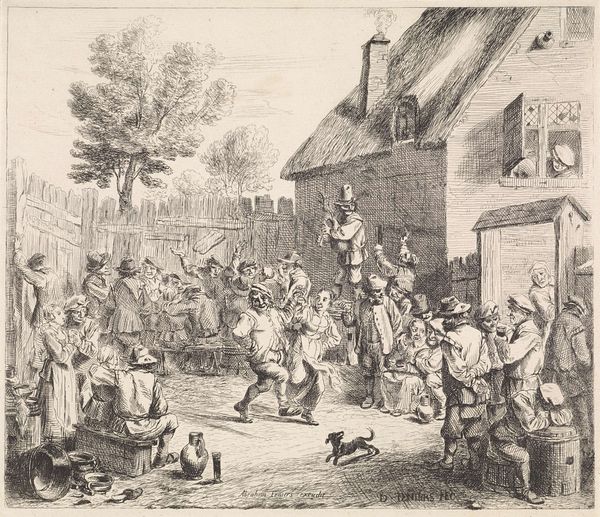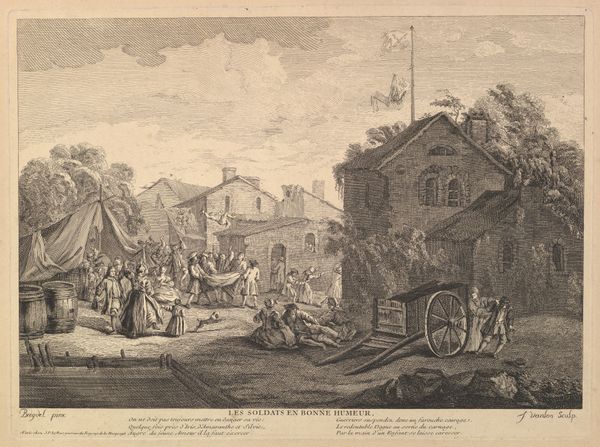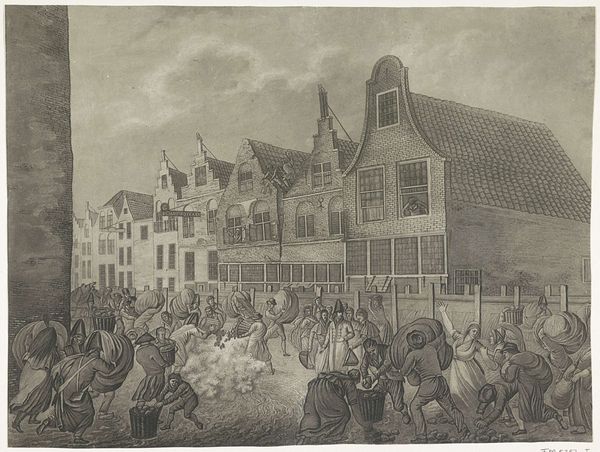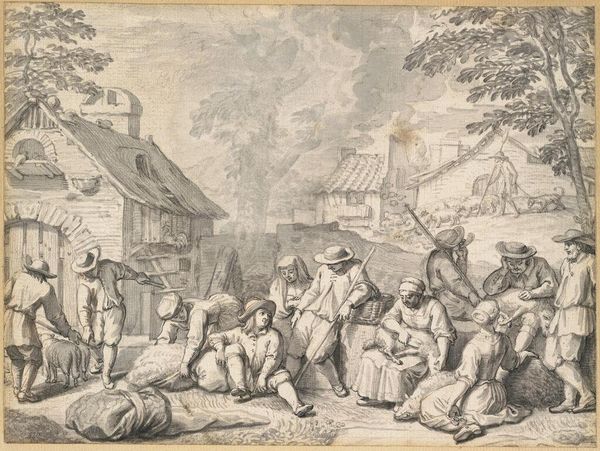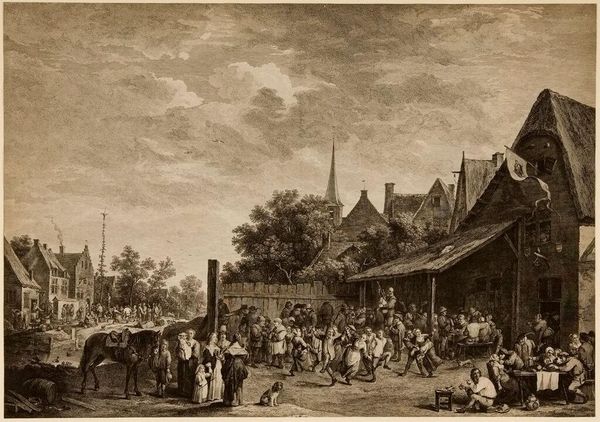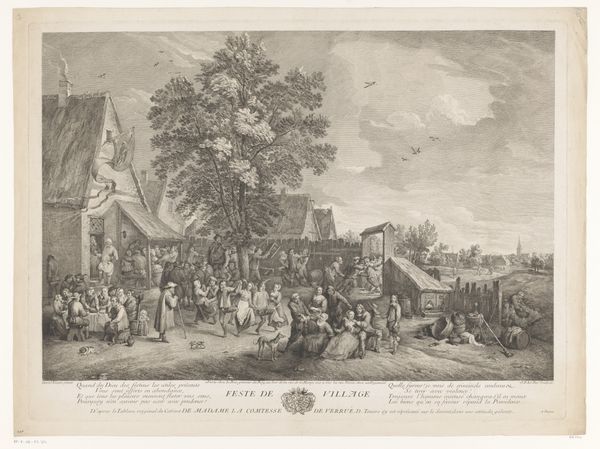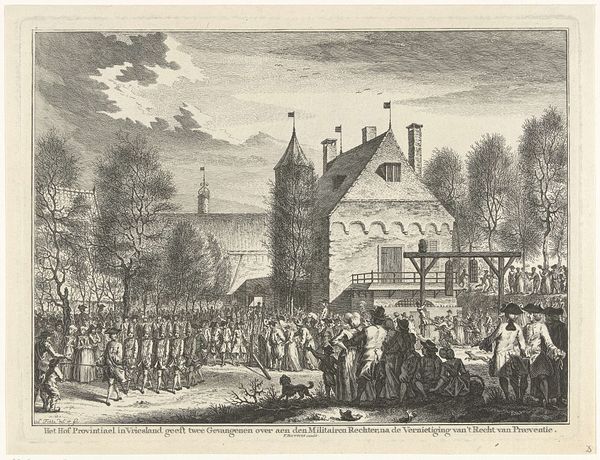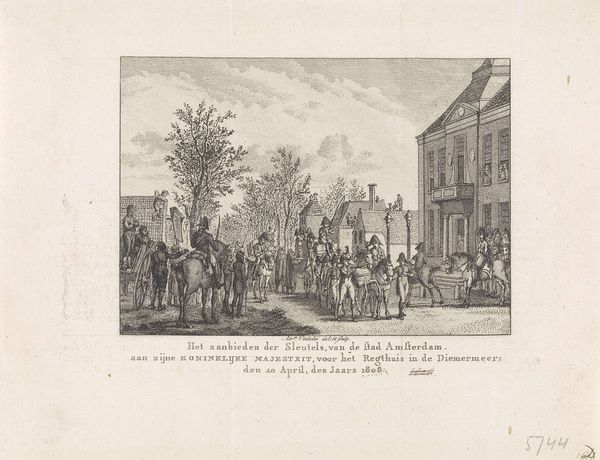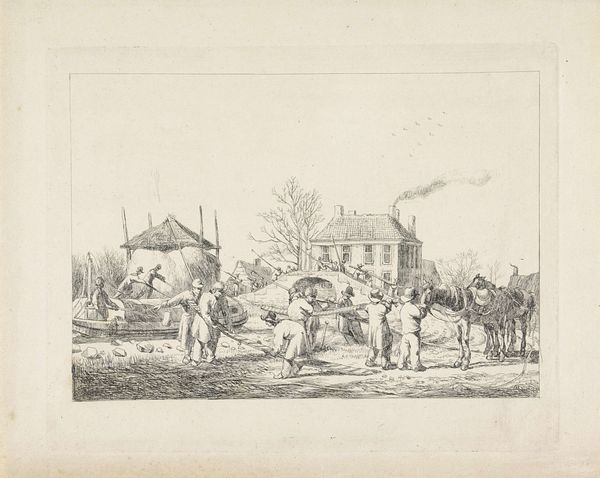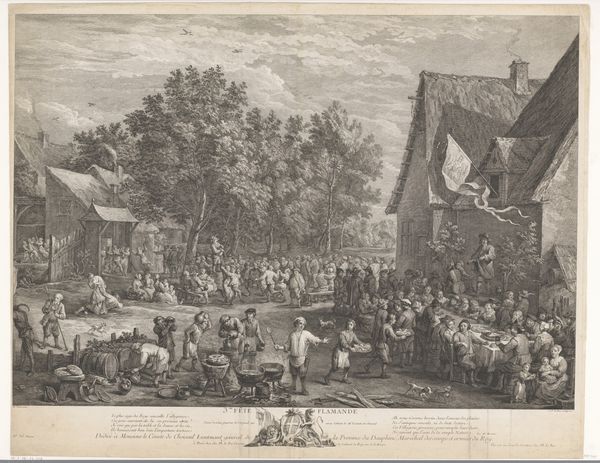
drawing, print, ink, woodcut, engraving
#
drawing
#
dutch-golden-age
# print
#
dog
#
landscape
#
ink
#
group-portraits
#
woodcut
#
horse
#
cityscape
#
genre-painting
#
engraving
#
building
Dimensions: height 129 mm, width 173 mm
Copyright: Rijks Museum: Open Domain
Curator: This engraving, entitled "Meeting of Men and Women in a Village," is attributed to Isaac Weissenbruch and dates between 1836 and 1912. It’s currently held at the Rijksmuseum. What jumps out at you? Editor: The immediate impression is bustle. There’s so much going on, but rendered in a very linear, almost reportage style. It feels like a candid snapshot, though I imagine carefully composed. Curator: Exactly. It feels incredibly authentic, capturing a slice of life in a rural setting. The way he’s used shadow creates this fantastic atmosphere of both excitement and, dare I say, underlying tension. The faces aren't particularly idealized, which I find quite refreshing. Editor: That tension feels tied to the gender dynamics present, perhaps even a subtle critique. We see clusters of men engaged in what appears to be a transaction of sorts around the table on the left. The women seem more peripheral, almost spectators to whatever's unfolding in the village square. Are they bartering? Gambling? The scene is active. Curator: It’s difficult to tell exactly, isn't it? It reminds me of old market days where trade was about so much more than just exchanging goods; it was a key social ritual. And let’s not forget, women’s roles at the time, especially in rural communities, were so tightly bound. Editor: Indeed, and note the horse being presented in the center. Land and livestock are often a backdrop, maybe even an emblem, to discussions of wealth and power. It could be symbolic of economic transactions occurring within a patriarchal structure, hinting at larger power imbalances. I appreciate how this deceptively simple scene has a narrative with multi-layered complexity. Curator: Me too! The artist cleverly uses the setting to highlight those subtleties. The detail, the very human qualities of the characters… I can almost hear the sounds of the village. It really speaks to me. Editor: Absolutely. This image allows us to consider what village life in that period signified for different genders and social strata. Thanks for bringing it to our attention!
Comments
No comments
Be the first to comment and join the conversation on the ultimate creative platform.
